Related Research Articles
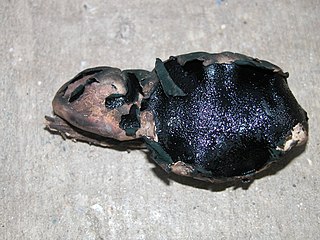
Sordariomycetidae is a subclass of sac fungi.

Diaporthales is an order of sac fungi.
Roccellina is a genus of lichen-forming fungi in the family Roccellaceae.
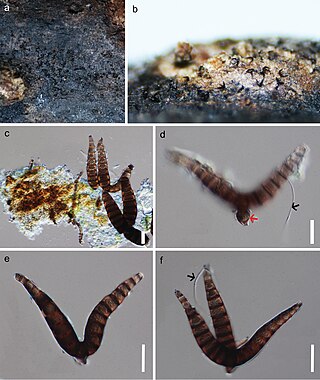
Iodosphaeria is a genus of fungi in the family Amphisphaeriaceae. Most of species of Iodosphaeria are saprobes that feed on dead leaves and twigs of various hosts such as the Argentine white pine. No species have been reported as pathogenic to hosts. As of January 2022, it contains eleven species.
Neopeckia is a genus of fungi in the class Dothideomycetes. The relationship of this taxon to other taxa within the class is unknown.

Xylobotryum is a genus of fungi in the Ascomycota phylum and in the order of Xylobotryales.

Candelaria is a genus of lichen-forming fungi in the family Candelariaceae. The genus was circumscribed by Italian lichenologist Abramo Bartolommeo Massalongo in 1852.

The Annulatascaceae are a family of fungi in the monotypic order Annulatascales of the class Sordariomycetes of the Ascomycota. The family had not been assigned to any order, until 2020 when it was placed with a new order Annulatascales M.J. D'souza, Maharachch. & K.D. Hyde.
The Papulosaceae are a family of fungi in the class Sordariomycetes and in the subclass Diaporthomycetidae. The family has not been assigned to any order. A monotypic taxon, the Papulosaceae contained the single genus Papulosa, which in turn contains the single species Papulosa amerospora. This species, found in the eastern USA, grows in Juncus stems.
Aquaticola is a genus of fungi in the Cephalothecaceae family of the Ascomycota. The relationship of this taxon to other taxa within the Sordariomycetes class is unknown, except that it is in subclass Diaporthomycetidae, and it has not yet been placed with certainty into any order.
Fluminicola is a fungal genus in the family Papulosaceae of the Ascomycota. The relationship of this taxon to other taxa within the Sordariomycetes class is unknown, and it has not yet been placed with certainty into any order. This is was a monotypic genus, containing the single species Fluminicola bipolaris until 4 more new species were found in 2017 and 2021.
Fusoidispora is a fungal genus in the Annulatascaceae family of the Ascomycota. The relationship of this taxon to other taxa within the Sordariomycetes class is unknown, except that it is in subclass Diaporthomycetidae, and it has not yet been placed with certainty into any order. This is a monotypic genus, containing the single species Fusoidispora aquatica.
The Chaetomiaceae are a family of fungi in the Ascomycota, order Sordariales, class Sordariomycetes. Chaetomiaceae are usually saprobic or parasitic. Cheatomiaceae are a great source of enzymes with diverse biotechnological and industrial applications such as PMO, L-methioninase, β-1,3-glucanase, laccase, dextranase, lipolytic, pectinolytic, amylolytic, chitinolytic, and proteolytic enzymes. The production of such compounds can be taken into account as candidates for the development of effective and novel lead compounds for medicine, biological control and production of bioactive secondary metabolites. Chaetomiaceae furthermore contains some of the most well known thermophilic fungi, an interesting feature carrying many biological applications, but that is found only in few fungal genera.
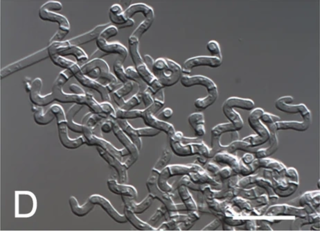
Arachnomyces is a genus of cleistothecial ascomycete fungi described in 1902, of which the anamorph (asexual) stage is the genus Onychocola. Although morphologically similar to members of other families, the fungus now belongs to its own monotypic family Arachnomycetaceae, which is the only family in the monotypic order Arachnomycetales.
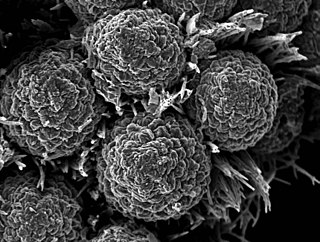
The Chaetosphaerellaceae are a family of fungi in the Ascomycota, class Sordariomycetes. The family was described in 2004. Species in the family have a widespread distribution, and are found in both temperate and tropical areas, where they grow saprobically on fallen wood.
The Ceratostomataceae are a family of fungi in the phylum Ascomycota, class Sordariomycetes, subclass Hypocreomycetidae and order Coronophorales.
Pteridiosperma is a former genus of fungi within the Ceratostomataceae family.
Geodina is a genus of fungi in the family Sarcoscyphaceae. This genus contains two species: Geodina guanacastensis, found in Costa Rica, and Geodina salmonicolor, found in the Dominican Republic.
Fluminicola is a fungal genus in the family Papulosaceae of the Ascomycota. The relationship of this taxon to other taxa within the Sordariomycetes class is unknown, and it has not yet been placed with certainty into any order. This is was a monotypic genus, containing the single species Fluminicola bipolaris until new species were found in 2017 and 2021.
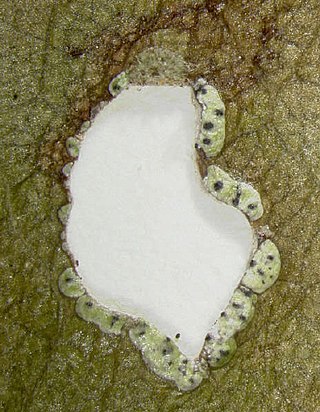
Strigulaceae is a family of lichen-forming fungi, one of two families in the order Strigulales. Recent (2020) molecular analysis of the type genus, Strigula, has led to a reallocation of the foliicolous species into six genera that correspond to well-delimited clades with diagnostic phenotype features.
References
- ↑ Lumbsch TH, Huhndorf SM. (December 2007). "Outline of Ascomycota – 2007". Myconet. Chicago, USA: The Field Museum, Department of Botany. 13: 1–58.
- ↑ Wijayawardene, Nalin; Hyde, Kevin; Al-Ani, Laith Khalil Tawfeeq; Somayeh, Dolatabadi; Stadler, Marc; Haelewaters, Danny; et al. (2020). "Outline of Fungi and fungus-like taxa". Mycosphere. 11: 1060–1456. doi: 10.5943/mycosphere/11/1/8 .
- ↑ "Species Fungorum - Names Record". www.speciesfungorum.org.